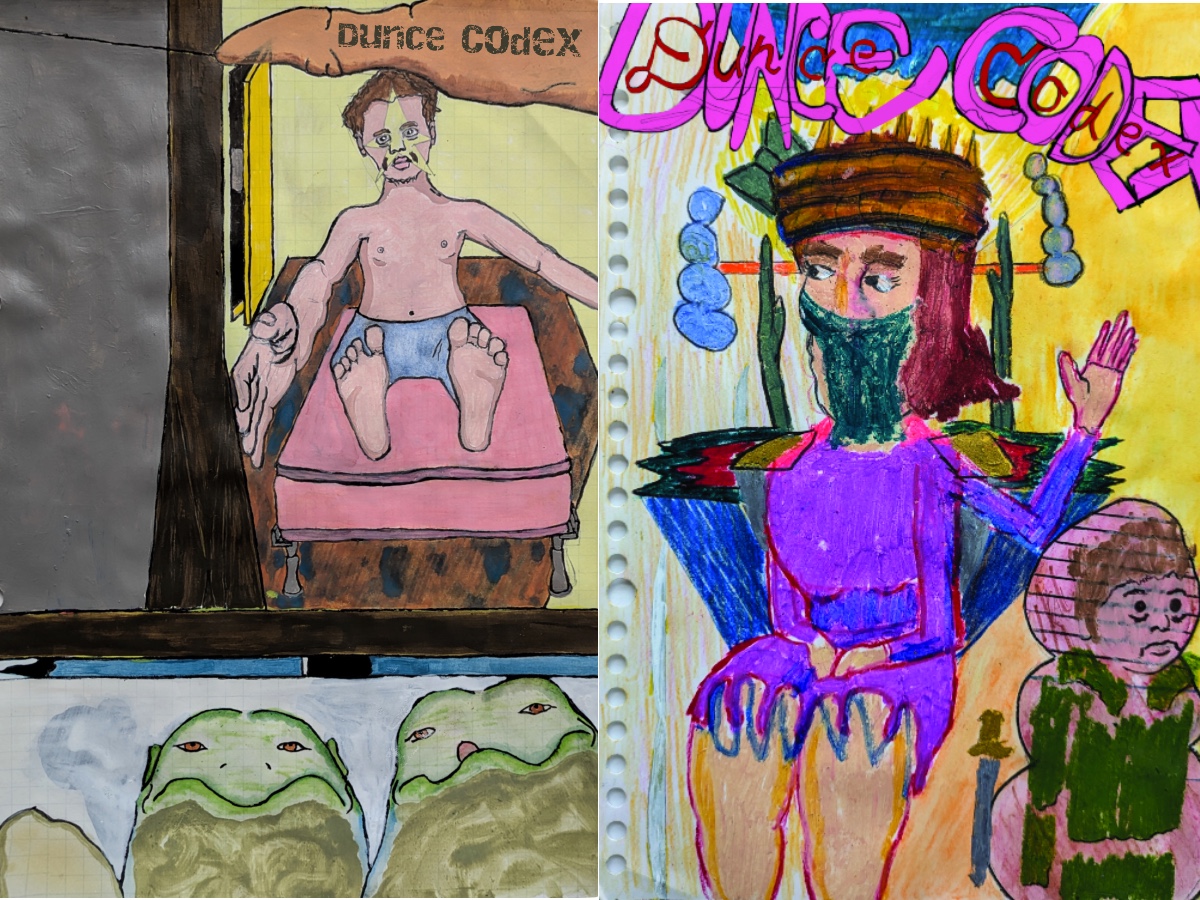
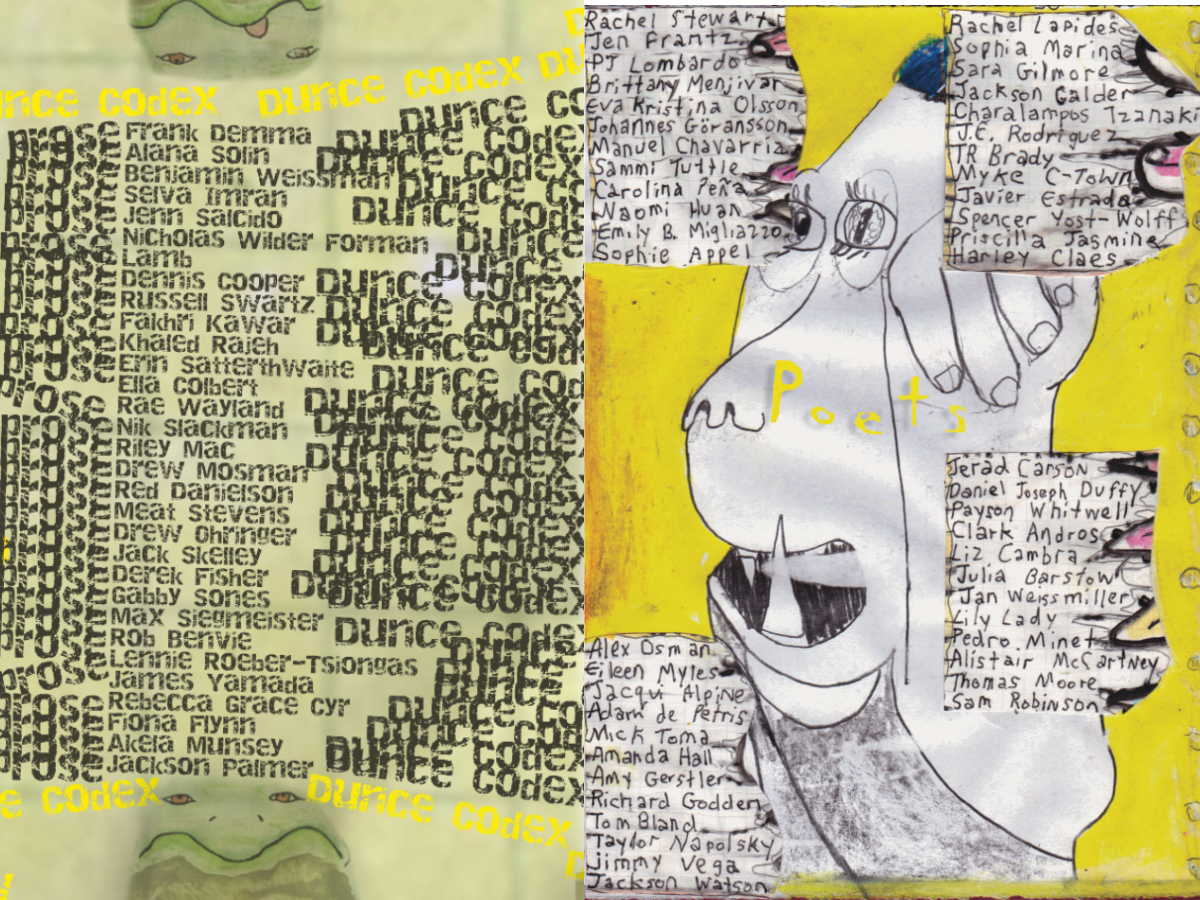
—- The idea for Dunce Codex came to me in the summer of 2020. At that time it was just a wish to put together something cool and unconventional. I didn’t even have a name for it. I just wanted writing that would speak to people, and I wanted writers who were willing to take chances, especially if those chances involved the risk of fail-ure. This idea floated around my skull until finally I mentioned it to my friends, and they encouraged me to pursue it.
—- But why two books? The answer is simply that I received more work than I had anticipated. And in the event that I’m unable to continue with Dunce, I wanted to put together something substantial, something of quality, in short something that best represents what I initially envisioned. I believe this present collection does just that.
—- Thank you to everyone who sent their work over for consideration. This would not be possible without you. Thank you, Amy, Benjamin, Dennis, Jack and Jac, for all your support and for your contributions to the magazine. And to David McDe-vitt and Mady Barudin I am forever indebted-David for providing the cover art to the magazine and Mady for formatting its pages. Both of you put up with my many neverminds and last-minute changes, and I am grateful.
—Roo
DUNCE CODEX CONTRIBUTORS
POETRY
Rachel Stewart, Jen Frantz, PJ Lombardo, Brittany Menjivar, Eva Kristina Olsson, Johannes Göransson, Manuel Chavarria, Sammi Tuttle, Carolina Peña, Naomi Huan, Emily B. Migliazzo, Sophie Appel, Rachel Lapides, Sophia Marina, Sara Gilmore, Jackson Calder, Charalampos Tzanakis, J.E. Rodriguez, TR Brady, Myke C-Town, Javier Estrada, Spencer Yost-Wolff, Priscilla Jasmine, Harley Claes, Jerad Carson, Daniel Joseph Duffy, Payson Whitwell, Clarke e. Andros, Liz Cambra, Julia Barstow, Jan Weissmiller, Lily Lady, Pedro Minet, Alistair McCartney, Thomas Moore, Sam Robinson, Alex Osman, Eileen Myles, Jacqui Alpine, Adam de Petris
PROSE
Frank Demma, Alana Solin, Benjamin Weissman, Selva Imran, Jenn Salcido, Nicholas Wilder Forman, Lamb, Dennis Cooper, Russell Swartz, Fakhri Rajeh, Erin Satterthwaite, Ella Colbert, Rae Wayland, Nik Slackman, Riley Mac, Drew Mosman, Red Danielson, Meat Stevens, Drew Ohringer, Jack Skelley, Derek Fisher, Gabby, Sones, Max Siegmeister, Rob Benvie, Lennie Roeber-Tsiongas, James Yamada, Rebecca, Grace Cyr, Fiona Flynn, Akela Munsey, Jackson Palmer
COVER DESIGN BY DAVID McDEVITT
David McDevitt dreamdavid Writing Art Illustration Video Animation Cars See Poems Love Super Great Earth mcdeath
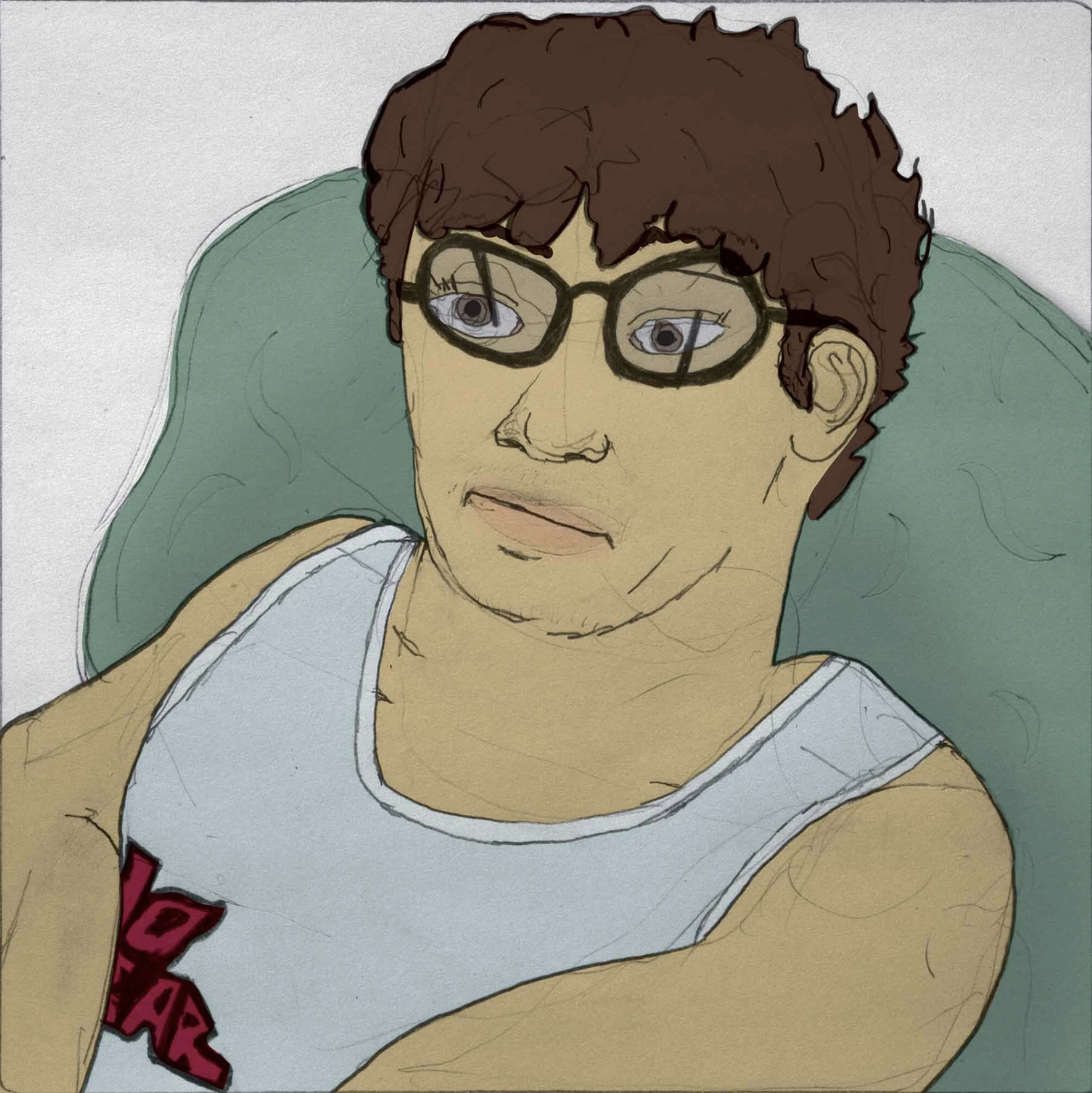
Georgie
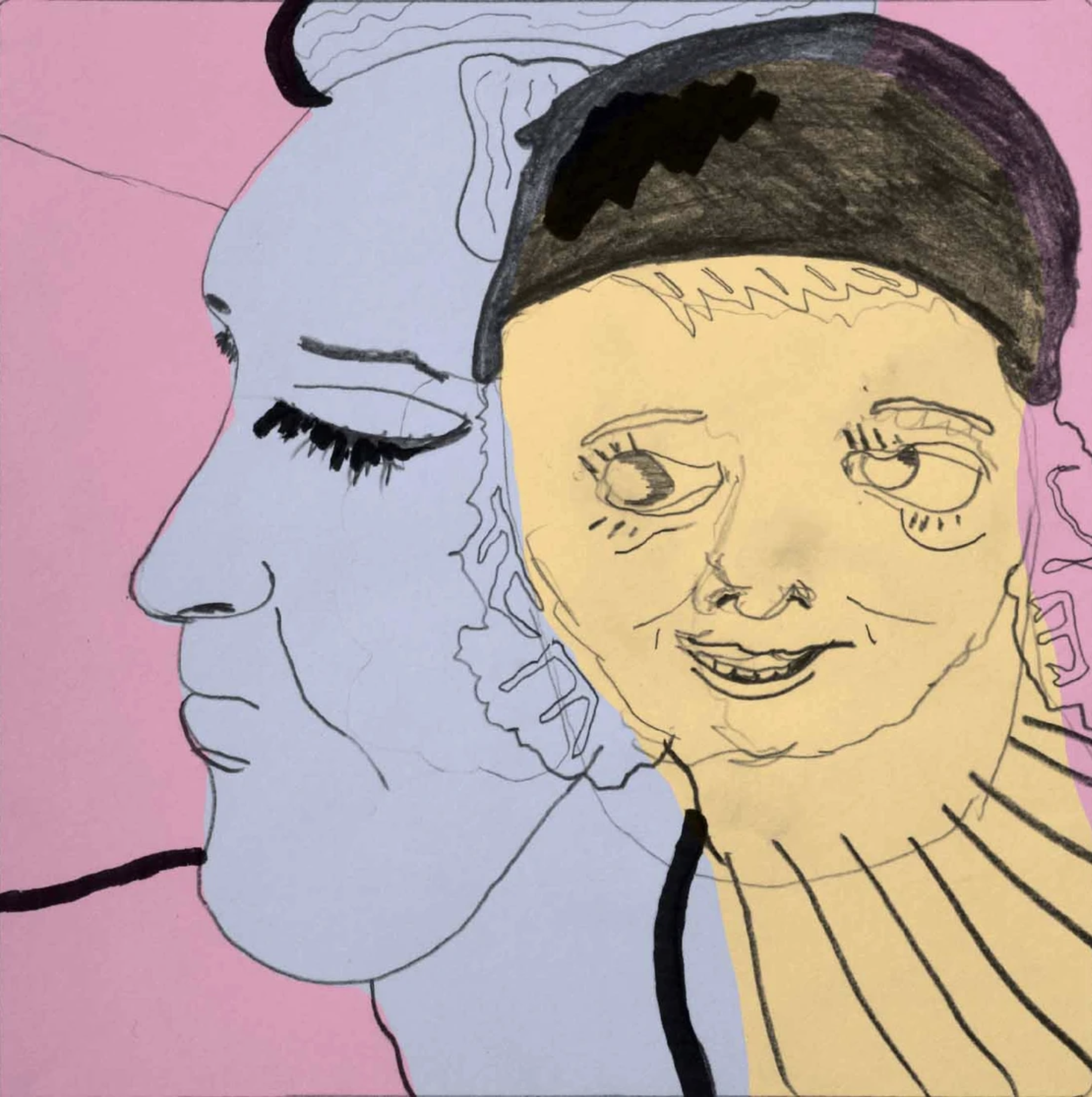
Hopeful Love Affair
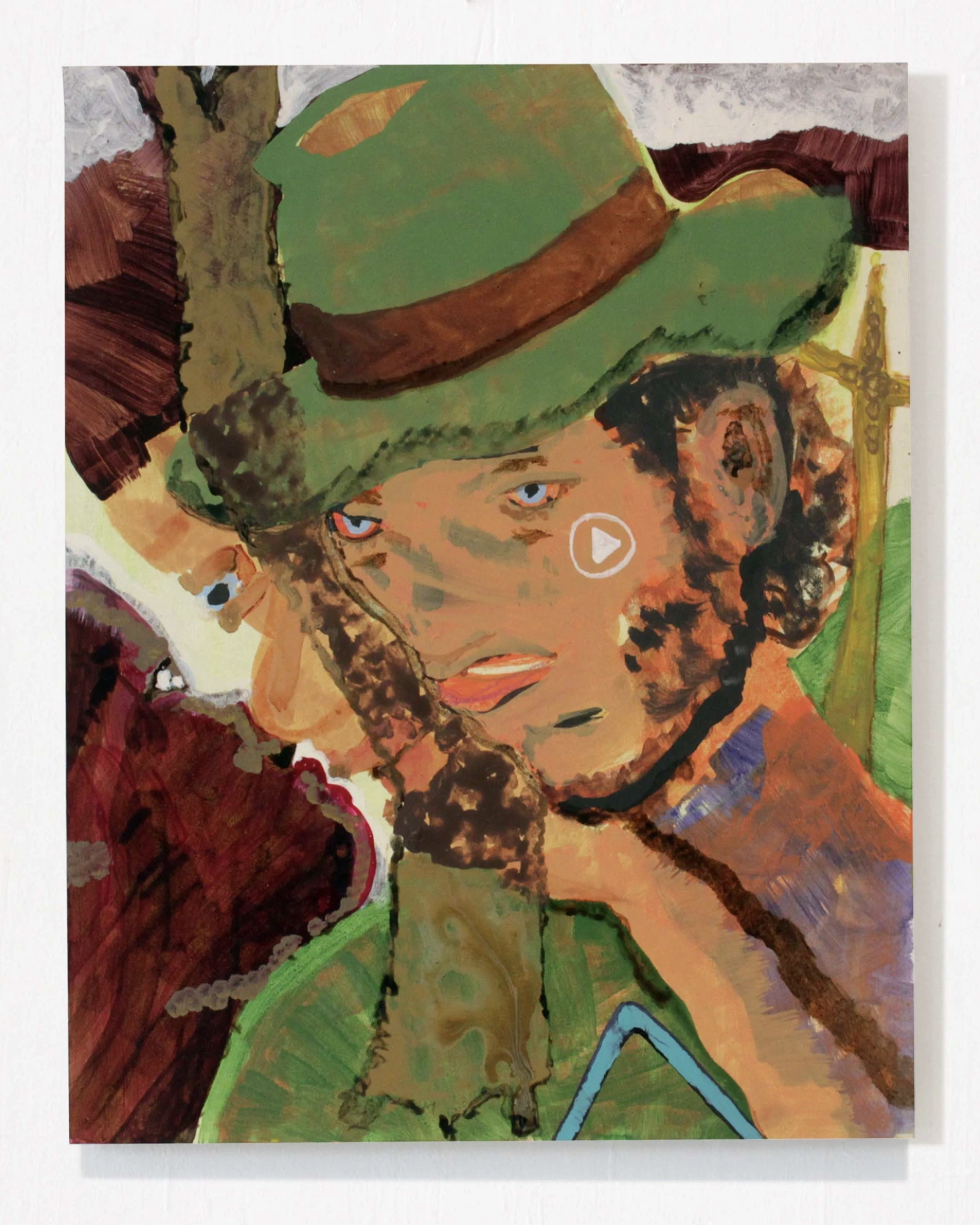
Single Bike Rack (2023)
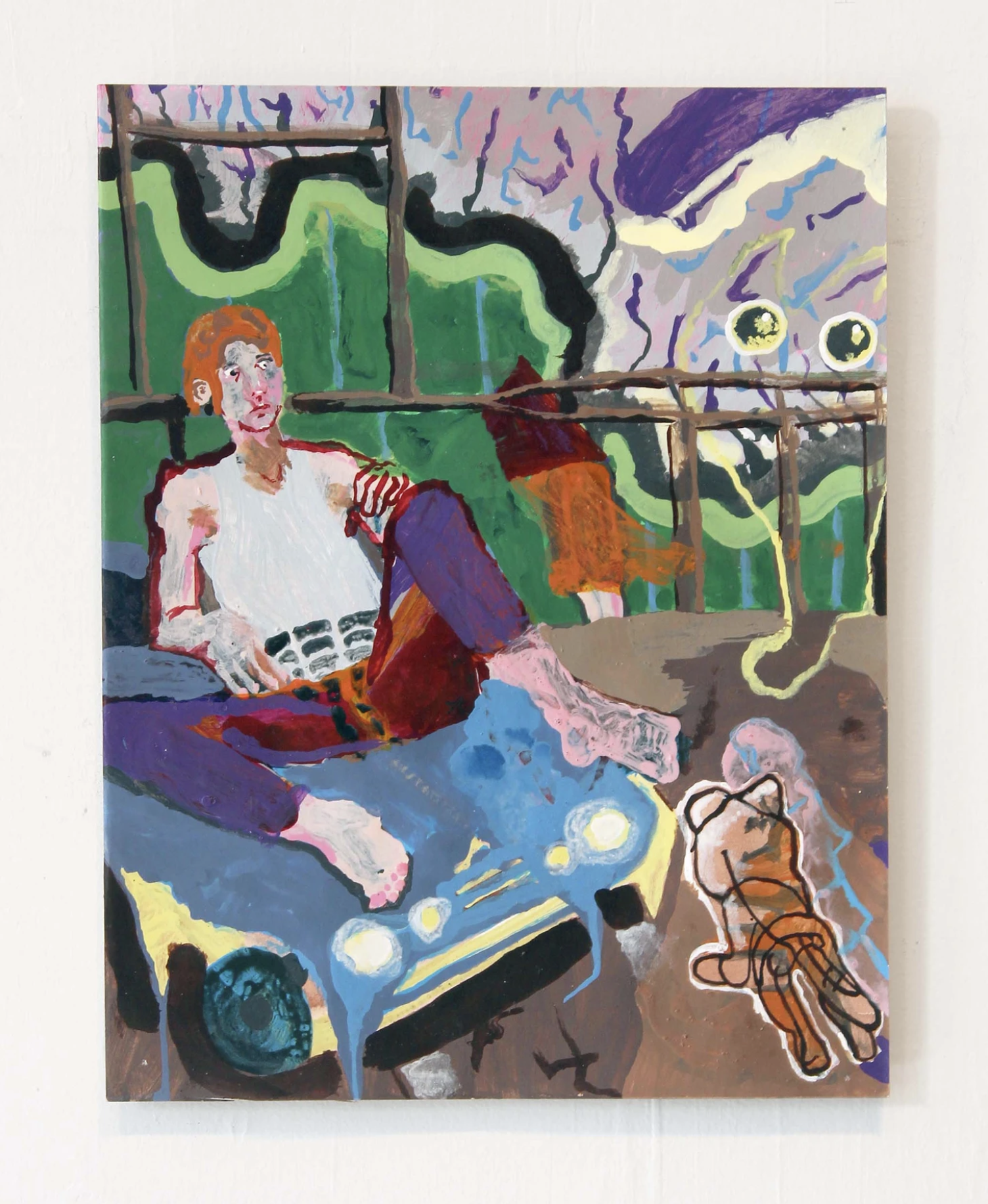
Sitting Twisted in Cave Mine (2022)
EXCERPTS
Rachel Stewart
IN TIME, CAREFULLY
I am arrested
by the aroma of an apple
for the first time in years.
And on a walk,
a dog so motionless
it wouldn’t dare scatter birds.
Today, cirrus clouds.
It is a charmed life.
I won’t describe the years
without. They were full of dread
and familiar excuses
for why I hadn’t been
descended upon by anything
significant or productive
aside from envy.
As always, to stay the course,
when night approaches
I tell myself
“put yourself to bed,
put yourself to bed.”
To be humble, of course.
I wait my turn.
Caro Peña
THIRTEEN
I ran away for the first time when I was thirteen. I grabbed my biggest backpack, went to school, and when the bell rang I hopped on a bus headed a couple towns north instead of going to my grandma’s. I was sent to the psych ward for the first time when I was thirteen. This was when I realized I despised hospitals. Nurses fed us pills every six hours and had us all sitting in front of a television ninety-percent of the day. I guess it would have been sort of relaxing if I wasn’t so restless. My nail biting habit started when I was thirteen. Perhaps it started when I started to register the absurdity of everything. How insanely anxious it made me. One of the icebreaker questions our group leader asked us was, “If you were given the chance to have anything in this world, what would it be?” A patient blurted out, “Money. Money would fix all my problems.” But millionaires kill themselves in their mansions…. I had my first therapy session when I was thirteen. My therapist tried explaining to me that running away from all my problems wasn’t an ideal way to deal with issues. I explained to her that I always dreamt of being a track star.
Jacqui Alpine
TOE
Everything is out on the table
I left it there
Might I find a relevant action
Oh!
There’s my foot
I use it to measure sound
ON MY DAY OFF
On my day off I stare at the wall
Idea about dyeing my hair
I summon greater neural activity
I reckon that dyeing has nothing to do with death at all
I rest my head on the table
I reckon it would take me 1200 years to write a novel
I get a call from Aunt B
Says ma was a witch
For real like Salem
Walk outside—
New snow
Alana Solin
GUNNER
—- Things are not fake before they are real. Gunner’s funeral was Gunner’s funeral. The priest or preacher who spoke gave personal remarks before slipping into an obituary so seamlessly that I thought it was part of what he’d written until I saw it on the website. I’d never read an obituary so detailed and so personal, but that makes sense. Old people don’t get long obituaries put online because they wouldn’t care. Much younger than Gunner, there wouldn’t be a lot to say. I’m glad I didn’t die young. I’m glad they never had to say or not say I loved dragons or dogs or horses.
—- Gunner loved everything, it says in the obituary. Salmon farming in Maine. A solo walk across most of our state. Five languages, three learned from TV and movies. The monastery.
—- I knew he’d do a lot. It sounded like the obituary of someone made-up. And his deep and abiding love of God. It was true, but I never would’ve thought to say it. I didn’t know about the monastery. We’d never spoken about church. We speak well of the dead for a reason.
—- And his fast hold on life. I hadn’t spoken to Gunner for three years. It felt like most of forever. I told people it was two years but it was three.
—- I wanted his death to open up some portal for me. I guess it makes sense that it didn’t. Falls don’t make the cliff…etc.
—- I’m watching TV. The woman glints blonde bent forward by the crash. Tonight, bodies fall from the overpass of my dream.
—- Loss is not my loss, its pockets burning holes through rooms and their negatives. The screen strikes a ring in the sequence, the house runs bright with water gone still.
—-
Agent of distance like a girl in a pool. The smell of wet skin untransmissible. November in the scores cut into the new season. November sanded of its soft eye and valves. November stunned into flight by an oncoming car, by its own written name. Out through the smaller mouth, burnt November, fresh slicker of rain.
—- Young pit vipers feed lavishly on the tails, channel forty. Another method of doing away. Our knowledge together with structural blue gives violet.
—- Cloud-bending heifer, watch me develop power, all signs point to censure, I’ll pass on all liquor. It’s time to drink water, I’m counting forever, got early so late, I can see but behind it.
—- Tooth-hard headfirst footsure in fool’s paradise, fixed spires scrape the passing sky. Asked for the time, I give my name in reverse.
—- Horizon is a need disguised as a place. At destructive velocity, the world’s slowest train. Ductile under God’s powdered hands, God in coordinates, the miracle chain. Out of the steppe I accept yeses, turn over the blinking wheel to star cud and silver, thumb the car key, the calfskin, and heaven’s mottled lock.
Liz Cambra
SNAILS ARE TRANQUIL
1.
Because they appear after
a rain, like other calm things.
2.
Because a snail can’t acquire
literary memory
but can still self-fertilize
which gives a tranquil feeling.
3.
Because Patricia Highsmith
hated all people, especially
women, but loved snails, since snails
do not look like people
or behave like women.
She liked their smooth genders,
one snail lurching onto another
without female hesitancy
without male violence.
4.
Because when a snail dies by accident
it is blameless.
5.
Because when a snail dies by intent
it is after all a small death,
the loss of its lifetime
bearable.
6.
Because there is tranquility
in observing only
what we can bear.
Canned Snakes
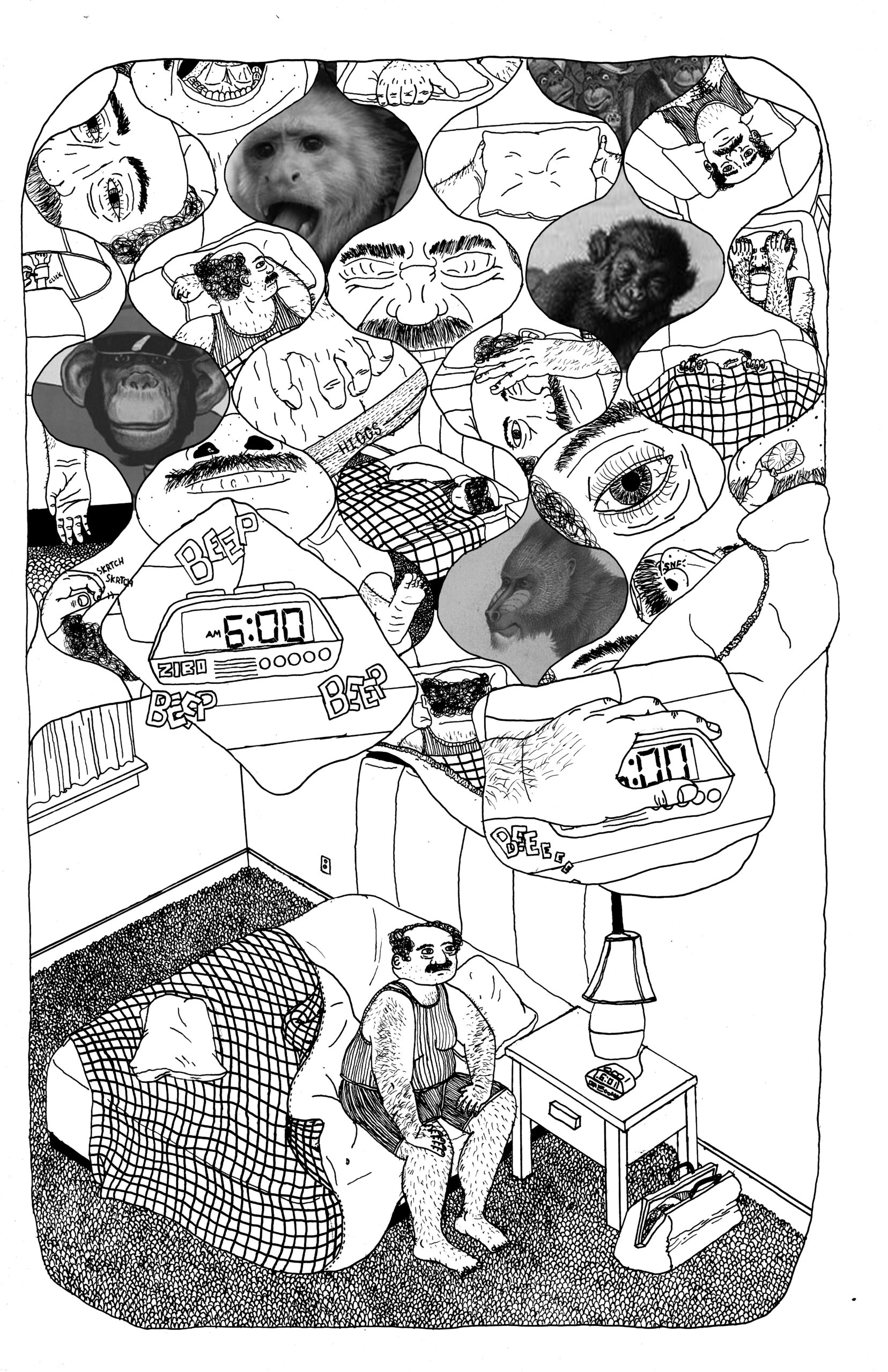
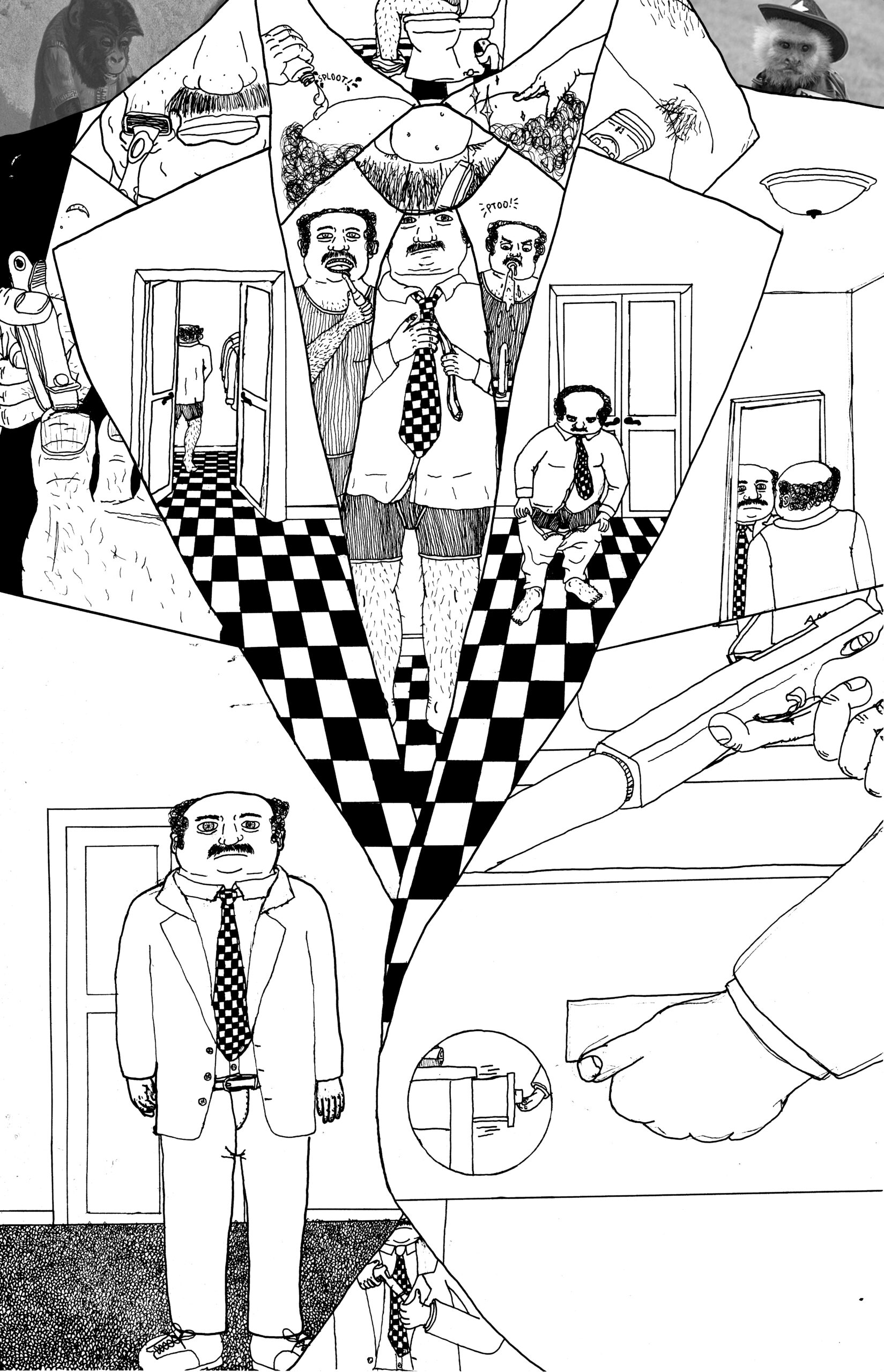
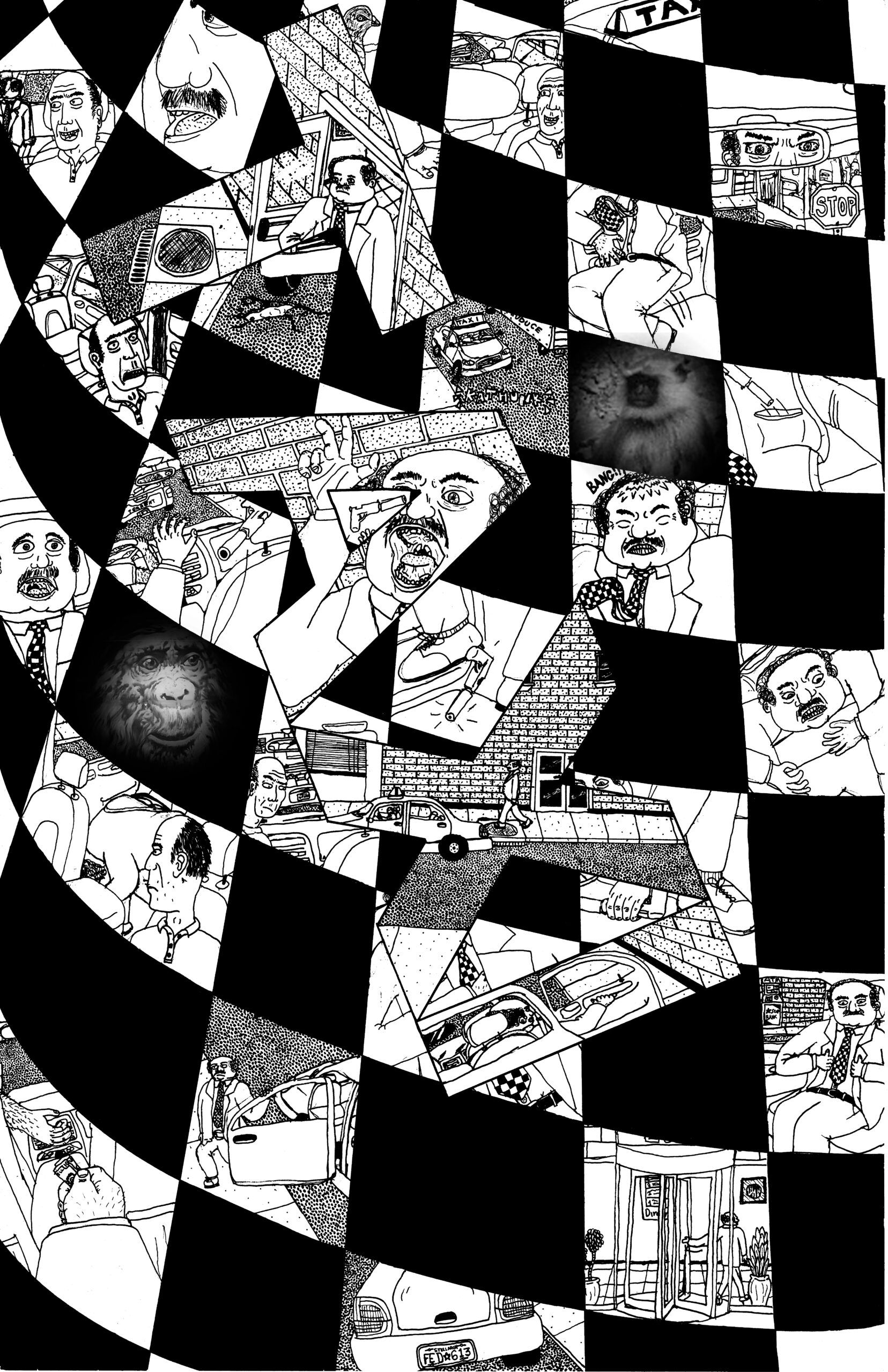

Russell Swartz
Paul, the In-Unit Boyfriend
Stephanie called me, and she was doing her usual thing, needing something. She was heading out of town for a while. Somebody with money who loved her had died and left her something and she was packing up to go backpacking around Yoruba or Malaysia. She talks so damn fast. But the long and short of it was that she had a nice enough apartment close to downtown, close to my work, and she knew I hated my roommates and Mark was a shitty landlord anyways, and did I want to sublease her place? It was cheap enough that I could afford it, which should have been the first red flag, and the property management company didn’t even know what she looked like and I could just walk on in, keys in hand, send the check every month, nobody would bother me. And yeah, she was right, I guess. Mark was a shitty landlord and I did hate my roommates and I could walk to work from her place. She had ten months left on her lease, and if she wasn’t back I could just mail her the paperwork to reup. So I said I’d think about it and she said that I should think quickly, because she had a lot of people who wanted that place, which might have been true but she was a bullshitter. So I thought about it and what the hell. I called her back and asked if I could at least take a tour, and she got kinda shifty and said some like, “yeah, of course, but god, isn’t scheduling these days hard, we’re all so busy,” stuff, and then she was going to the Maldives and all that stuff that made me think she had like a mold problem or something. I took the place because you know, what the hell. And then she’d owe me one and it’s good to get owed one by somebody who dates guys like Andy McCluskey. And she’d owe me a big one too. I mean, I saved her a ton of money. You try paying rent around here. So like I was saying, we got lunch and she gave me the keys and told me she was heading to somewhere that same day with a name like Copa de Sangre or something. I mean, she talks so fast. She said she’d left some furniture. So I went back to work and figured I’d check the place out afterwards. And I did. I was looking for the mold but I found Paul. Funny.
—- I didn’t know about Paul when I got the keys from her. I went up to the second floor, opened the door, and saw a bunch of bare floors and a wall with a framed print of some flowers and a man on the couch. He smiled and waved like he was supposed to be there and I screamed. I mean no joke screamed.
—- “What are you doing in my apartment?” I said.
—- He looked at me very funny.
—- “This isn’t your apartment,” he said.
—- “I’ve got the keys.”
—- “Yeah, but you’re not Stephanie.”
—- “Well, who the fuck are you?”
—- He said he was Paul. And he said he was the in-unit boyfriend for the place. And I asked him, “the what?”
—- “The in-unit boyfriend,” he said.
—- I asked if I could make a phone-call, and he said sure, and so I stepped out and called Stephanie and got her fucking voicemail. I mean. Come on.
—- I texted her like four times. She was probably on the plane. I called McCluskey, the hot-shit lawyer to the stars she’d dated off-and-on for a while. He said a pretty grouchy hello, so I made it quick and asked if he knew who the fuck Paul was, and he said, “The in-unit boyfriend?” like this was just a thing that happened to people. And I said yeah, and he said, “He’s the in-unit boyfriend.”
—- “Well, fuck,” I said, “what’s that?”
—- “Look, dude, I’m pretty busy right now,” he said. “I thought it was just some guy she had on the side.”
—- “You knew about this?”
—- “Yeah.”
—- “And you were cool about it?”
—- “Yeah. I knew she was coming home to me.”
But he told me that she told him that Paul was in the lease somewhere, one of the clauses about maintenance, and that a copy should still be somewhere in the place, and anyways, he had to go, let’s get a drink soon maybe? And yeah, I said, maybe soon, just to get him to shut up, and we hung up.
—- I took a breath and went back in. Paul was still there. He smiled. It was a nice smile. I couldn’t be mad at it. I asked him what the deal was and he told me he was the in-unit boyfriend.
—- “No, like what’s the deal with you?” I said.
—- “I like to paint,” he said. “I guess I like old jazz, Benny Goodman and Glenn Miller and that kind of stuff. But I’m mostly just here for you.”
—- “And if I want you to go?”
—- “Sure, I’ll go.”
—- He stayed smiling the whole time. Like a Mormon missionary.
—- “If I ask you to make me dinner?”
—- “I’m not a great cook, but I’ll try!”
—- “Do you fuck?”
—- “Yeah.”
—- “Alright,” I said. “I guess I can work with that.”
—- So that night he made pasta and it was bad but, like, okay bad, you know? Stephanie called back while we were eating on the couch. Always something with her.
—- She said hey out of breath, and there was some very loud music. I asked her what the deal with Paul was, and she said she couldn’t hear me, and she’d call me back. And then she hung up.
—- I asked Paul if Stephanie had liked him.
—- “That’s a little personal,” he said.
—- “Yeah, but you’re here for me.”
—- “That doesn’t mean I don’t have feelings.”
—- And what the fuck good did that do me?
—- “I’m not a robot,” he said. “I’m just your boyfriend.”
—- “So, I mean, what does boyfriend mean in this context?” I said. “Like…”
—- I couldn’t pull together what I wanted to say.
—- “It means whatever you need it to mean right now.”
—- “No obligations.”
—- “If you don’t want them.”
—- “Obligations?”
—- “If you want them.”
—- “And your feelings.”
—- The smile that always was.
—- “Don’t matter as much.”
—- “But you can’t talk about Steph.”
—- “My feelings about some things don’t matter.”
—- So I went to work the next day and Carissa was there, which was kind of funny because I hadn’t seen her on the schedule, and I asked her if she had ever heard of something like Paul and she put the tray of glasses she was carrying down and said she’d have to think about it. I caught her later in the shift looking over at me and talking to Anders and they both were kind of laughing like they were confused. But to be honest, so was I.
—- And so I started asking customers, or at least the ones I knew well enough to ask. I even asked Tom, who was fucking weird to the girls around here. And they all said they hadn’t heard of it. I went out to smoke and texted Stephanie.
hey
can you please tell me what the fix is up with paul
fuck
like whats going on
with him
—- And I waited around for a response out behind the dumpster in the autumn air. It was nice out back there. Quiet. Away from customers, I could think. So that’s what I did.
—- In the cool outside, the weird shit with Paul didn’t seem to matter as much as the cheaper rent and the walk to work and the rest of the reasons to keep the place, and I could keep him around in case I got bored.
—- McCluskey texted me that night, of all things.
Drinks? Like we said?
sure
When do you get off?
you mean work?
To start off 😈
—- (I mean, Jesus Christ.)
midnight
probably
Can I pick you up?
sure
—- So my shift ended and there was McCluskey in his fucking black sedan because he couldn’t be normal and drive a sports car like every guy with big money, he had to drive an Escalade or whatever it was, idling with his blinkers on and just fucking the traffic. I mean, he was getting honked at, he was getting yelled out. He opened the door for me and I got in.
—- “You look nice,” he said.
—- “Thanks,” I said. “Work makes me.”
—- “Good for them.”
—- We drove. Man, his car is comfy. I say is because he probably still has it, or something newer.
“So how’s the Paul thing going?” he said.
—- “Fine, I guess.”
—- “Still weird.”
—- “Yeah.”
—- “You want my advice?”
—- I looked out the window at the palm trees.
—- “No.”
—- “Just use him for sex.”
—- “Thanks, Andy.”’
—- “No, I’m serious. Where do you want to go?”
—- “The Old Mill?”
—- He flicked on his blinkers and made the turn on the beachside road that would take us to The Old Mill.
—- We talked a little on the way there. He was representing an actress you’d know in her divorce proceedings. She was going to clean the guy out, he said. Take the shirt from him and whip him with it, he said.
—- “Does he deserve that?” I asked.
—- “Nah, he’s cool” he said. “I just feel like winning big on this one.”
—- He asked if I was seeing anybody. I told him somebody, which was a lie, but he was starting to annoy me. He asked who. I said nobody he’d know. He asked if we were exclusive. I said no.
—- “You want my advice?” he said.
—- “No.”
—- “You should keep it that way. Saves a lot of hassle.”
—- Then he put his hand on my knee and I thought about it and I let him keep it there. Saved a lot of hassle.
—- We went back to my place after we had a few drinks at the Old Mill and I woke up to him snoring. I got up and went to the living room in my underwear and there was Paul drinking coffee and writing in a little notebook. He looked up.
—- “Fun night?” he said.
—- “Yeah.”
—- “Cool. You want coffee?”
—- “Yeah. Thanks.”
—- When Paul saw McCluskey, he nodded and said, “Hi, Andrew. Been a while.”
—- “Hey, Paul. Long time no see.”
—- “How’s the law firm?”
—- “Good. How’s the apartment?”
—- “Same as ever.”
—- The morning sun was coming in through the little window over the kitchen sink.
—- “I gotta go,” said McCluskey. He walked over and gave me a little peck, and then he walked out.
—- “Andy,” Paul said. “Huh.”
—- “Do you have an issue with that?”
—- “No,” he said. He went back to writing in his little notebook. “I just think you could do better.”
—- Paul and I slept together after a few weeks. It was just time.
—- He was good.
—- And after a while, I don’t know, I guess I started to like him. It was good to have him around. I’d just never been, like, good, I guess? At keeping stable relationships. My therapist (I didn’t have a therapist then but now I do) says I push people away so that I can’t let them hurt me.
—- So I fired her.
—- No, I’m kidding. But I mean, maybe she’s right. I was never any good at letting guys stick around. I almost let myself fall in love with this one guy in college, but he was moving a little too quickly, you know, flowers and stuff, and that was weird. But I don’t know. Paul was just there, and what was I supposed to do about it? I’d emailed the management company about him, and they said that he was part of the unit, and under no circumstances was I allowed to “substantially alter, change, or modify the furnishing of the unit without prior written consent from Company,” and that, “in case of substantial defect or failure in any unit furnishing, the Company may send representatives to alter, repair, or replace said furnishing without consent of Tenant.” And it was a sublease and I didn’t want to get into a hassle about paperwork when I was legally supposed to be somebody else, so there Paul was and there I was and there we were. And I guess I started to like him, and what else can I say, man? What else has there ever been?
—- And at some point I guess we slid from being weird to being comfortable. Or, okay, comfortable isn’t the word, maybe, right? But like, I don’t know. It felt less strange, the whole thing. He was just a roommate who didn’t take up too much space. He liked birds and could tell me their names when we saw them. I thought they were called blue jays but it turns out they’re scrub jays, and one night when we went for a walk together out in a big wild open place near the beach he heard an owl somewhere and said it was a screech owl. Which, I mean, be real. Just from the hooting? But he was good at this stuff. So maybe it was a screech owl. And I get, I still get, how Steph could do it. Because Paul was nice. And good. And uncomplicated. We would do dinner every Friday, sitting on the couch with very cold beers or putting on our nicest, my tallest heels, his sharpest jacket, and he would smile at me and he’d say, “This is fun, ain’t it?” and yeah, man, it was fun. It was real fucking fun.
—- McCluskey texted me one day during that period when we were riding high and asked if I wanted to get lunch. I had work that night but sure. What the hell. So he took me to The Bench, which was the place where all the lawyers went, and I asked him how the divorce was going and he looked at me like I was a little crazy and asked if I read the news, and to be honest, I really didn’t and, to be even more honest, I still don’t. But apparently it made the papers. I don’t think I can say her name, legally, but it was a big payday. Which might be why he was buying me thirty-dollar bucatini.
—- “So how’s Steph?” he said.
—- “I don’t know,” I said. “I haven’t heard from her.”
—- “How’s Paul? You guys still fucking?”
—- “He’s good,” I said.
—- “You ever wonder what that guy does when you’re not around?”
—- “No.”
—- “You think he just stares at the walls? You think that’s what he’s doing?”
—- “I think he’s got hobbies.”
—- “Name one.”
—- I twirled some bucatini on my fork and watched it slither off onto the plate. A little sauce splashed on the table.
—- “He’s into birds,” I said.
—- “He go bird watching?”
—- “Probably.”
—- “You never asked?”
—- “It never comes up. He likes jazz.”
—- “You ever go record shopping with him?”
—- “He likes to paint.”
—- “You ever see him do it?”
—-He took a bite of his sandwich.
—- “I’m just saying,” he said. He spewed a few bits. “You should be thinking about this stuff.”
—- “Is this why we’re at lunch, Andy? So you, of all people, can give me advice about a relationship?”
—- “No,” he said. He grabbed some fries. “We’re at lunch so I can brag about how much money I’m about to make. You’re not gonna believe it.”
(to be continued in Dunce Codex)
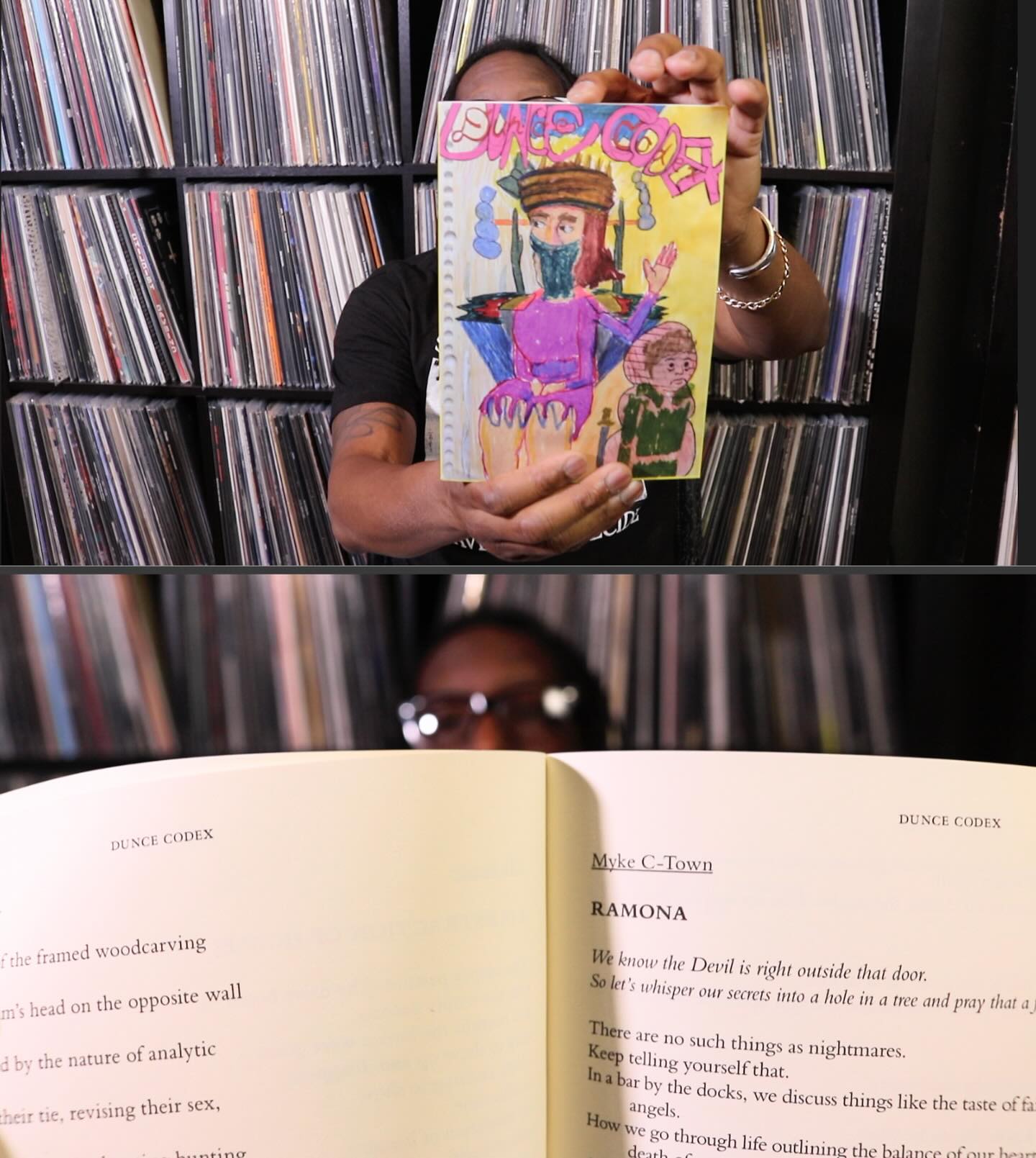
Thank you to everyone who sent their work over for consideration. This would not be possible without you. Thank you, Amy, Benjamin, Dennis, Jack and Jac, for all your support and for your contributions to the magazine. And to David McDevitt and Mady Barudin I am forever indebted—David for providing the cover art to the magazine and Mady for formatting its pages. Both of you put up with my many neverminds and last-minute changes, and I am grateful.
—The Editor
If you would like to obtain a copy of Dunce Codex, please visit @duncecodex on Instagram. There you will find a link to purchase. If you live outside the US and would like to order a copy, please send a DM, or email duncecodex@protonmail.com.
*
p.s. Hey. This weekend the blog has the unusually great pleasure of rolling out its red carpet function to help the world greet the new, amazing two volume lit journal/anthology Dunce Codex edited by the vibrant young poet and fiction writer Rooben. It’s a rich thing that includes new works by known superstars (Eileen Myles, Thomas Moore, Johannes Göransson, Jack Skelley, yours truly, and many others) and well as a wealth new and upcoming writers and artists. Plus, it’s named after a Guided by Voices song, so … Strong encouragement to both peruse the introductory display and get your hands on a copy. Thank you, Roo, for thinking of us. ** Misanthrope, Shit’s going around. The metro here is increasingly full of pale faced snifflers. Hope you got paid, jesus. And that your weekend pays way off. ** Dominik, Hi!!! Plus, as far as I could tell, you couldn’t eat the walls or ceiling or much of anything. An edible hotel should either be like an oversized gingerbread house or call itself a check-in buffet or something. Love should always be surprising and familiar, no? Mr. Cohen. Your version of love has such good taste. Mine is a bit too eclectic maybe. Touch me won’t you touch me now, So frozen I can’t love, When I was born my mama cried, And picked me up with gloves, G. ** Nicholas., Gosh, thanks! Too bad I couldn’t have actually popped into your pad to have a biting confab, but you probably weren’t even born at the time. I actually don’t know very much about Pamela Anderson. I like that’s she has stopped wearing make-up and that she surprised everyone recently by revealing that she’s a film buff with very good taste. But other than that and that she was or still is married to Tommy Lee, I never paid much attention to her. Dinner was some faux meat products and instant mashed potatoes wrapped in two tortillas. My favorite number is either 3 or 5, I can’t decide. You got one? ** James Bennett, Hi! Oh, thank you. I just meant that tech/ internet/ social media is just a thing in flux and that it’s not a solid, given thing, so it’s altering as we speak which causes me to feel like I should reserve judgement on its effect since its effect is inherently in-process. Maybe sort of the way people generalize when speaking about teenagers as though they’re some kind of locked down, specific species rather than humans in various stages of cross-fading from the longer term categories of childhood to adulthood or something. So I think it ultimately comes down to the basic thing of whether one is an optimist or some version of the opposite? I don’t know, just thinking aloud. Close Up is great. I hosted a curious event there a few years ago where they ask people to host/introduce a night of films without knowing telling them what the films are going to be. Very interesting programming, that place. I’m very happy you like ‘Black Sunlight’. It’s such an extremely alive novel. Really something. Gray and moist here too, getting very old. Have a fine weekend. Anything especially special happen? ** _Black_Acrylic, Phew, I was hoping so. I’ll look for ‘I Start Counting’. I love Jenny Agutter. I should do a Day about her. ** Steeqhen, Six hours of sleep, I’d be a dead head and not in the Grateful Dead fan way. Nice, the radio hosting. I was a dj at my university’s radio station during my brief university stint, and, god, that was fun. So you dressed up as a vampire last night? Sounds expensive. Oh, just lie and say I said that drug thing to you when we were having coffee. Good weekend! ** Tyler Ookami, His films can be fun intermittently but they are never amazing, if you ask me. Oh, wow, about your great uncle being in ‘The Incredibly Strange Creatures Who Stopped Living and Became Mixed Up Zombie’. I actually kind of love that movie. And he dated Liz Renay, wow. Nice lineage you have there, obviously. ** James, Poe distaste, interesting. I think he’s sort of like Stephen King: really good ideas but not such a hot writer. And yet ‘Scream, Pretty Peggy’ is arguably his most fun movie. What a world. Luckily for you the mere name James is not very revealing. On the other hand, if you talk like you write and your dad has peeked in here, you’re probably busted. Tea then. Surely you like tea being a Brit and all of that. ‘Best of Jill Hives’ is easily in my top ten GbV songs. Thanks for clearing that up about cockles. How complicated. And now you reveal tea as your drug of choice, so ignore that sentence. I’ll expect to see you back here all bright eyed and freshly shaven on Monday. ** Steve, Ugh, hang in there this weekend. Everyone, For Crooked Marquee, Steve reviewed Zeinabu Irene Davis’ 1999 film COMPENSATION here. I’ll check my email. Your weekend sounds most promising. Mine? Zac and I have to put together a press kit for ‘RT’. Palais de Tokyo just opened a big retrospective of the amazing post-graffiti artist Rammellzee, and I’m very excited to see that, probably today. And other stuff presumably. ** HaRpEr, So true. There are increasing numbers of under the weather people here, if that’s anything to go by. I tend to think of myself as a head on a moving platform, and, yeah, when the platform is stuck in place, there’s a bright side. Hm, good question. I don’t know. It seems like circumstance has a lot to do with it? I was extremely creative from the moment I could talk and make my hands function properly, and I was all over the place re: how that played out in physical terms, but I always wrote even when I was shifting around forms-wise, so I guess that means words were where my creativity — or maybe I mean talent? — was situated. But why that is? I don’t know. Does that make any sense? ** Justin D, Hey. Thank you. Yeah, watching ‘PGL’ again, I was really happy how we managed to make the world so still and have the majority of what was happening occur in the complicated ways they spoke to each other. ‘The Color of Pomegranates’ is one of my favourite films, although I haven’t seen it in a long time. What did you think of it? Happiest weekend possible for you. ** jay, Hi. Yeah, ‘De Sade’ is kind of a wet blanket. Oh, no, sad to think of you calling for my death. Or, well interesting too. More interesting than sad, I guess. I even feel guilty when I kill mosquitoes, although I do run around murdering them in a rampage in the summer. But I feel bad about it. I have a guilty pleasure thing about the ‘Final Destination’ movies, so yeah. Although in that case I don’t think I actually feel any guilt at all. Nah, a friend leant me a scarf, and it was kind of skimpy, but it managed to keep me alive for the duration. What are you doing this weekend? I’m imagining a plethora of highly mood enhancing things. ** Joe, Nothing is as horrifying as mainstream politics at the moment. I’ll try to find ‘Border Districts’ then. It sounds ripe for me from what you say. Thank you, pal. Onwards and upwards, eh? ** Okay. Do yourselves and ‘Dunce Codex’ the favor of conjoining your faculties with its outlay until further notice, thank you. See you on Monday.
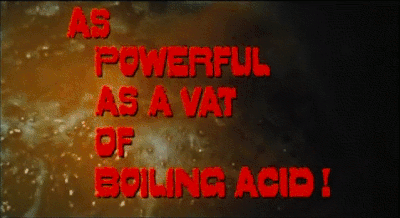
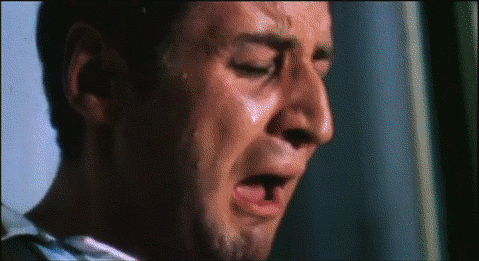





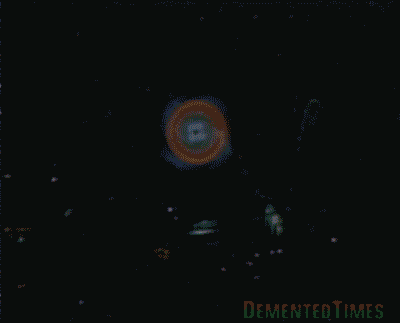

















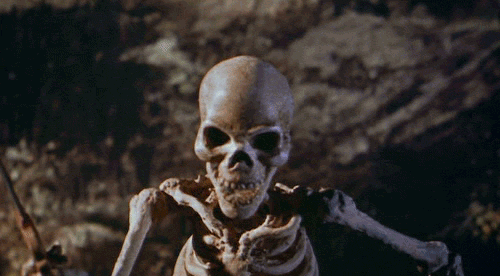


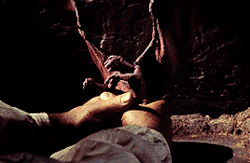







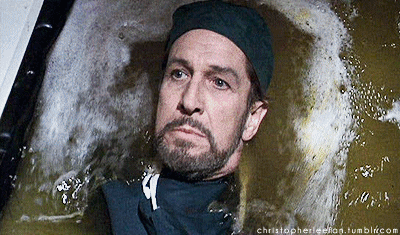











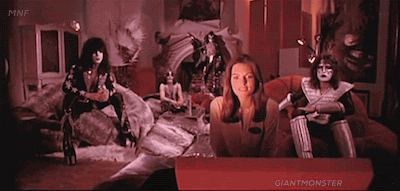



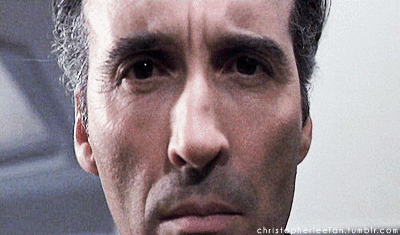



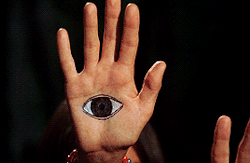
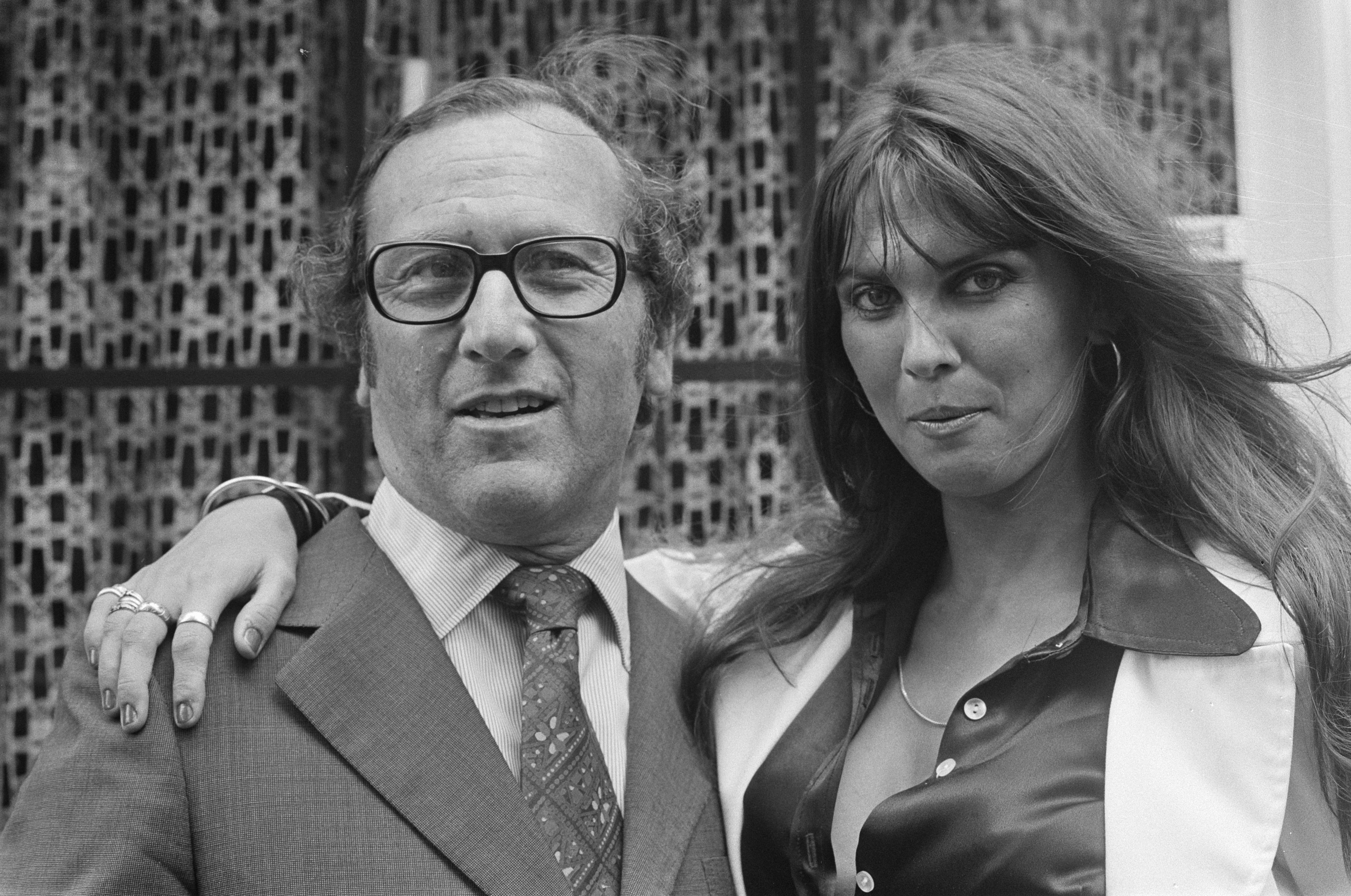



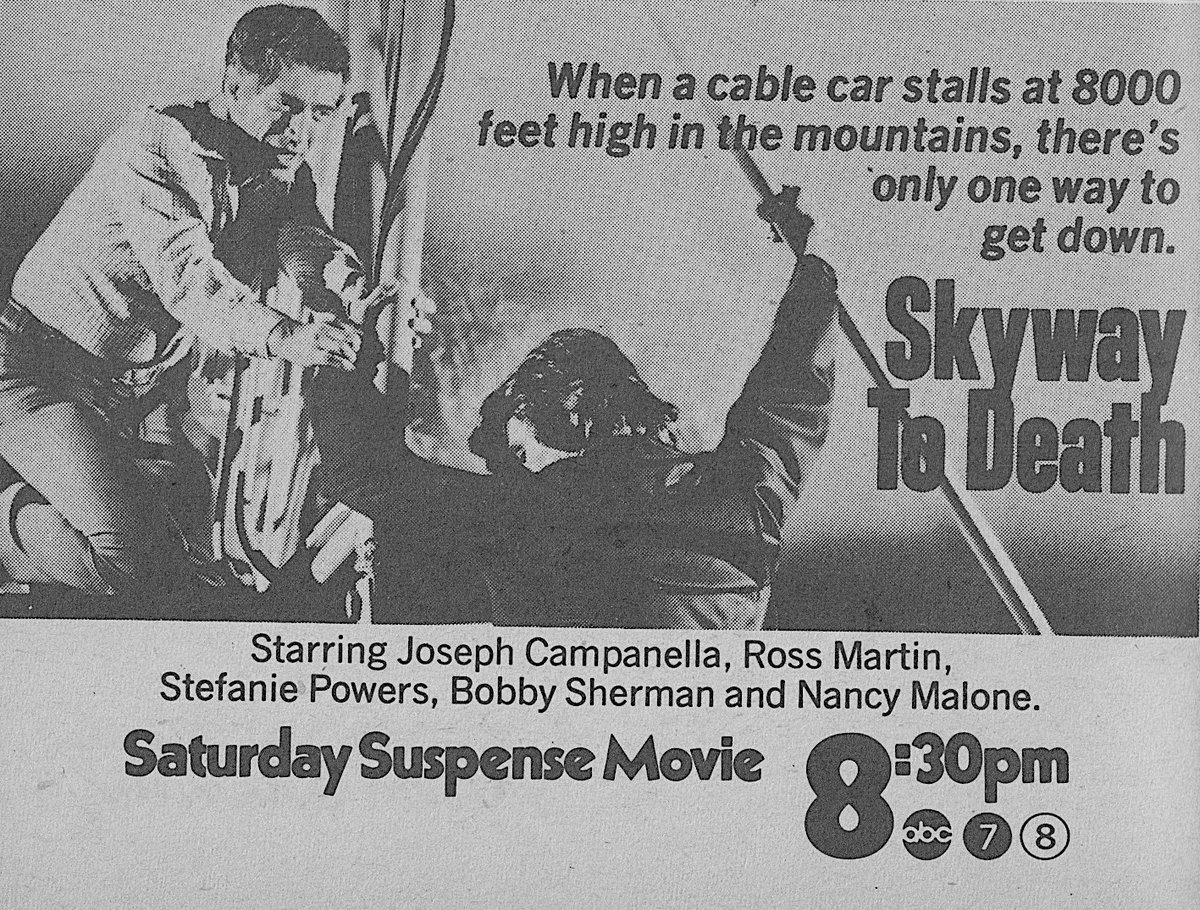

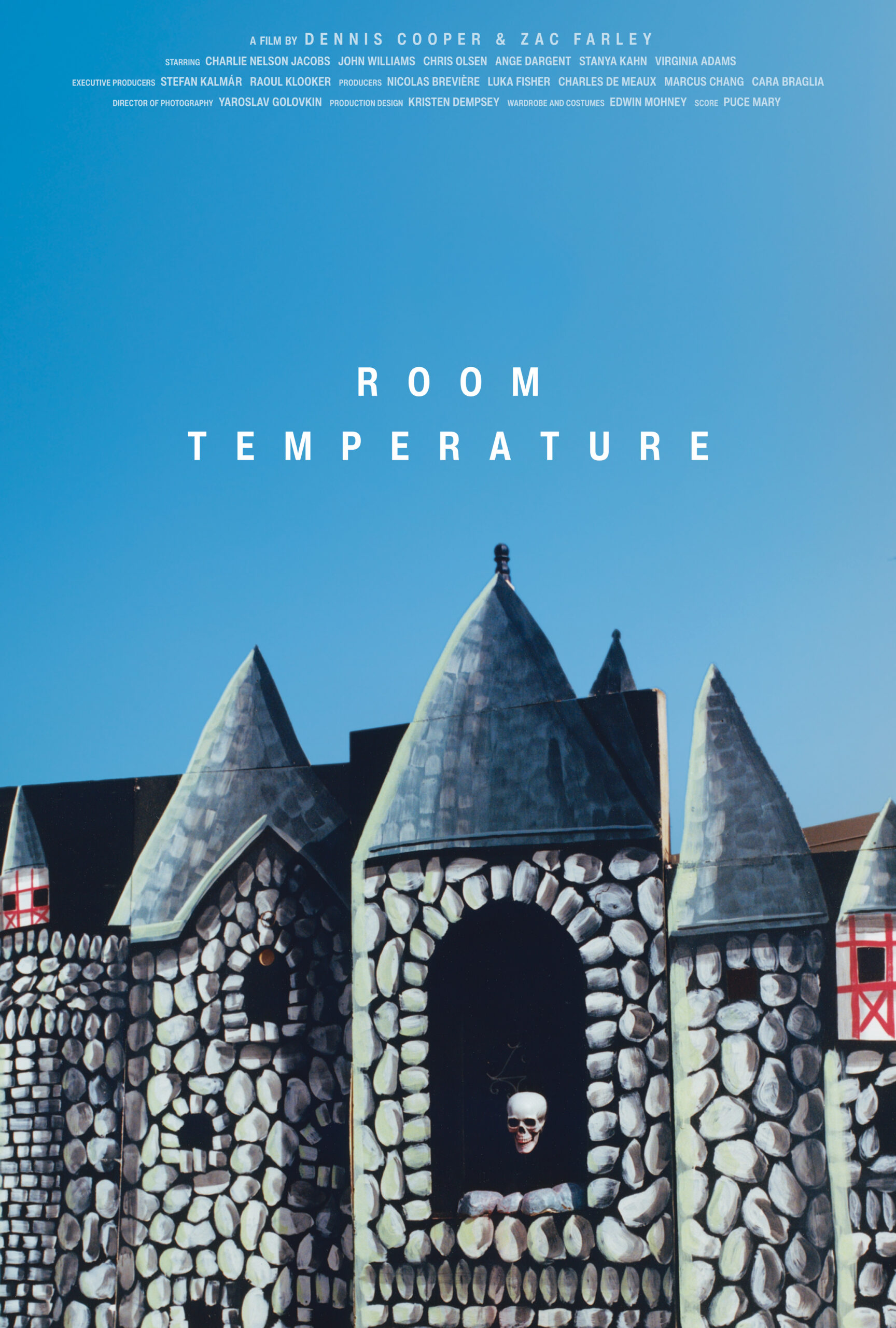



 Now available in North America
Now available in North America 